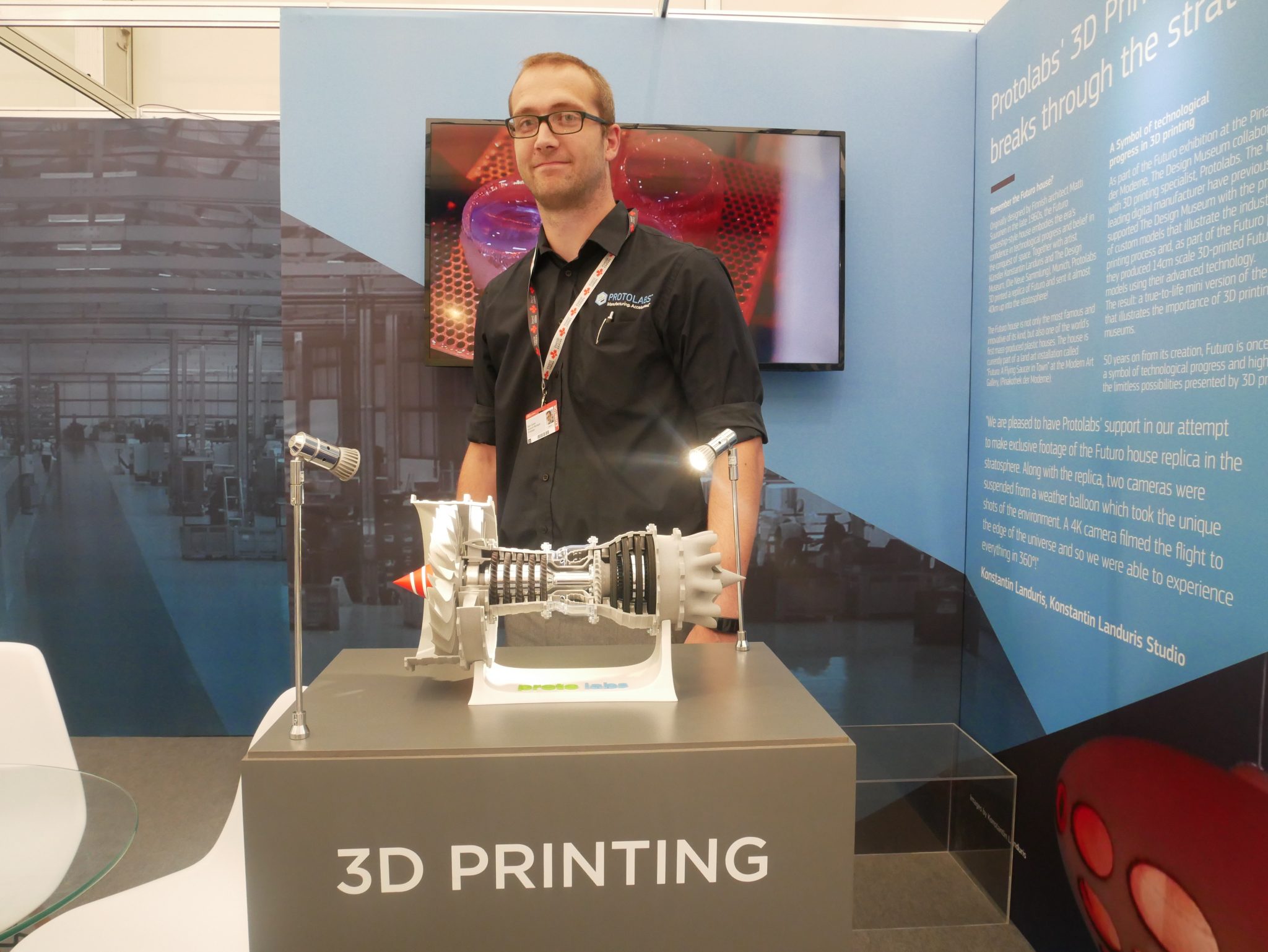The fourth industrial revolution, also known as Industry 4.0 is a term that aerospace manufacturers gravitate towards, but what does it actually mean?
Sameer Savani, Head of Innovation and Engineering at ADS Group describes it as “the new digital technologies coming into manufacturing. [Yet] there are lots of different terms for this such as smart factories [and] digitalization of manufacturing.”
Last week at Farnborough International Airshow (FIA), I had the chance to discuss the topic further with Protolabs and LPW technology, to find out how 3D printing fits into this definition, and what it means for the Aerospace industry.
Paving the way for Industry 4.0
The first industrial revolution began in the late 18th century with the emergence of mechanization. Following this, almost a century later, came the second industrial revolution. This crucial era developed electricity, and oil and gas, which resulted in larger factories and new processes such as chemical synthesis – the construction of complex chemical compounds from simpler ones.
In the second half of the 20th century, the third industrial revolution took place which concocted another new source of energy – nuclear. This revolution witnessed the rise of personalized electronics and also led to the production of materials for space research and biotechnology.
With the amalgamation of all the industrial eras before it, the fourth revolution is unfolding before us. Industry 4.0 is demonstrating the digital transformation of manufacturing industries through automation, data exchange, and additive manufacturing.

A digital processing thread
Founded in 1999, Protolabs, which is headquartered in Minnesota, continues to provide rapid manufacturing of low-volume 3D printed, CNC-machined, and injection-molded custom parts for short-run production.
With a 3D printed prototype of an aircraft turbine engine in front of him, Samuel Guest, Account Manager at Protolabs shared his thoughts on the meaning Aerospace 4.0 concept:
“Well, Aerospace 4.0 is the development of the way parts are manufactured maintaining that digital processing thread from concept design right through to delivery of part.”
Earlier this week at FIA, GE Additive launched its Manufacturing Partner Network (MPN), which will include Protolabs, as well as Burloak Technologies and Carpenter Co as initial partners. This network aims to leverage the current technology trends, such as digitized manufacturing, to additively manufactured components at a higher volume.

Traceability is the key
LPW Technology, a metal powder provider for additive manufacturers based in Cheshire, UK, showcased the Airbus APWorks Lightrider 3D printed motorcycle at the Aerospace 4.0 exhibition. The Lightrider utilizes Scalmalloy, a high-strength aluminum powder to construct the frame of the motorcycle.
“Scalmalloy, is one of the powders designed specifically for the aerospace industry,” said Nicola Jones, Marketing Manager of LPW Technology. Jones went on to describe her thoughts on Aerospace 4.0:
“It’s many things to many men. But, the important [thing] for us is traceability. Its data capturing every step of the way. We can capture the data right at the very point of taking the material into the factory all the way through the atomization process to the testing, storage, and transport and delivery out to customers.”
At LPW, Jones explains, “This is done through our PowderEye sensors which takes the all of the data to our PowderSolve software. It’s really powerful. Traceability is the key.”
LPW Technology also made two announced at FIA earlier this week. The first being a strategic partnership with The Barnes Group Advisors (TBGA), and the last being an agreement with Netherlands-based Additive Industries.
The latter partnership will see the two companies working together on “integrated industrial additive manufacturing of metal parts for high-end applications like aerospace.

Within Aerospace 4.0, digitalization is the recurring theme. Although companies are using a combination of traditional and additive manufacturing methods within their production, both of these methods can be manifested into fully functional intangible processes, that is, the fourth revolution.
Keep up with the latest 3D news by subscribing to the 3D Printing Industry newsletter. Also, follow us on Twitter, and like us on Facebook.
Looking for a change of pace? Seeking new talent for your business? Search and post 3D Printing Jobs for opportunities and new talent across engineering, marketing, sales and more.
Featured image shows the Aerospace 4.0 chalet at the Farnborough International Airshow. Photo by Tia Vialva.

